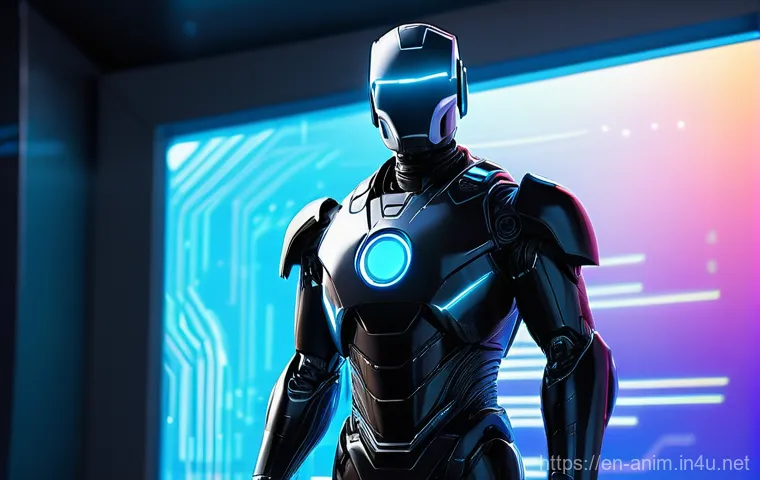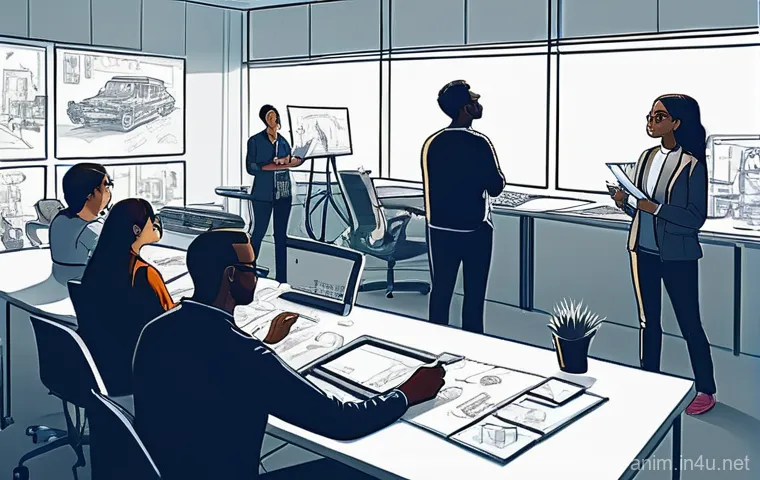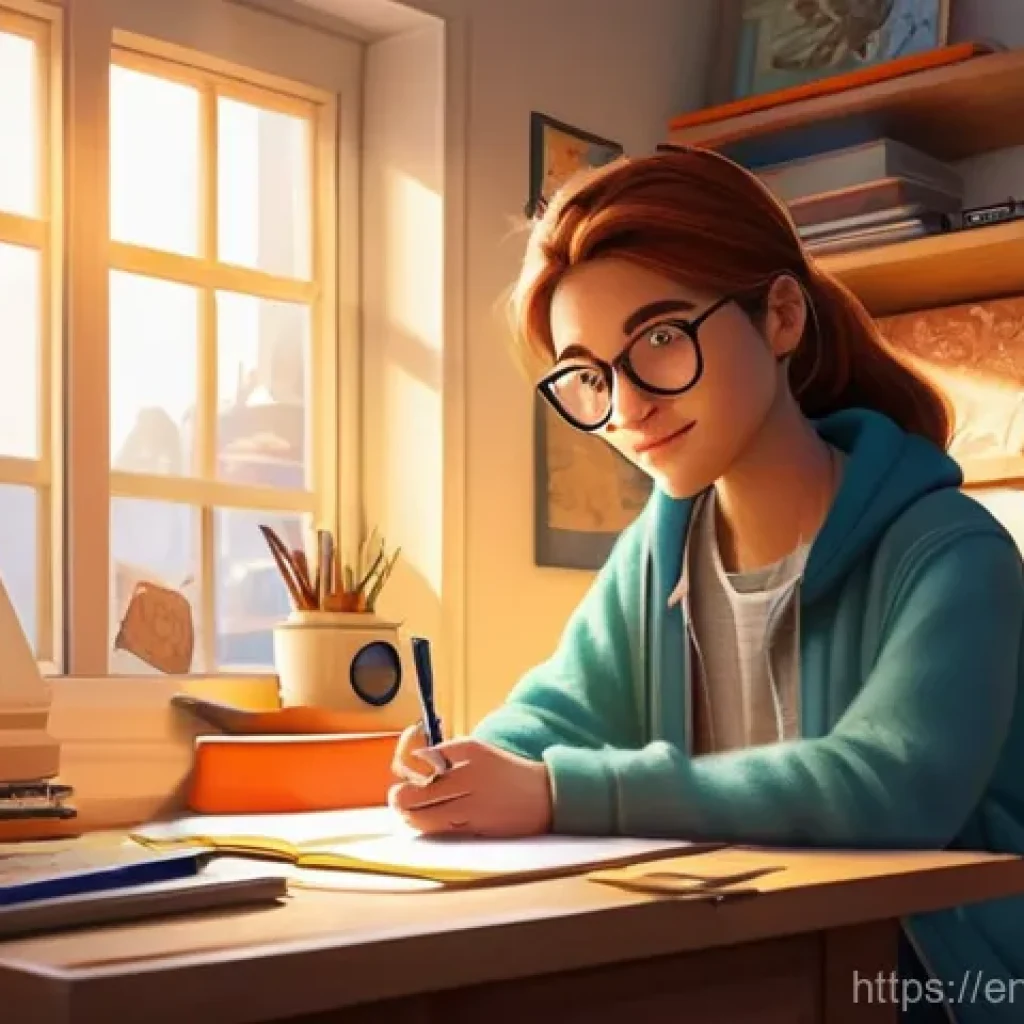Hey there, fellow animation enthusiasts and creative minds! It’s so easy to get swept away by the magic of animation, those incredible worlds and characters that capture our hearts and imaginations.
But behind every dazzling frame and unforgettable story lies a complex web of legal intricacies that animation studios navigate daily. From protecting those unique character designs you adore to safeguarding epic storylines, the legal landscape is more crucial than ever.
Especially now, with groundbreaking AI technologies reshaping how we create, I’ve personally seen how understanding intellectual property rights has become a game-changer – it’s like building your creative castle on a rock-solid foundation, not shifting sand.
The lines between human authorship and AI-generated content are blurring, bringing new challenges that demand our attention. Keeping your creative assets secure, whether it’s through robust contracts or savvy copyright strategies, is absolutely vital in this fast-evolving digital era.
Trust me, it’s not just about knowing the law, it’s about empowering your vision to thrive. Let’s explore exactly what you need to know to protect your animation dreams and keep them shining brightly.
Safeguarding Your Creative Spark: The Foundation of Animation IP

Understanding the Basics: Why IP Matters More Than Ever
Hey everyone, let’s get real about something that truly impacts every single frame we adore: intellectual property. From my time diving deep into the animation world, I’ve personally seen how understanding IP isn’t just some dry legal jargon; it’s the bedrock of your creative career and the very existence of your beloved animated universes.
Think about it: every character design, every unique storyline, every musical score, it all springs from someone’s brilliant mind. Without robust IP protection, these priceless assets could be copied, exploited, or even claimed by others.
It’s like pouring your heart and soul into building an incredible, intricate world, only for someone to walk in and set up shop without your permission.
That gut-wrenching feeling? It’s why IP is absolutely non-negotiable. Especially today, when AI can generate content at lightning speed, knowing your rights and how to protect them is your superpower.
It’s about ensuring that your hard work translates into sustainable success and that you maintain control over your creative legacy. I’ve learned firsthand that waiting until there’s a problem is far too late; being proactive is the name of the game.
Building Your Creative Fortress: A Proactive Approach
So, how do you go about building this creative fortress? It starts with a mindset shift. Instead of seeing IP as a hurdle, view it as an empowering tool.
From the moment you sketch your first character or outline your story arc, start thinking about ownership. This means registering copyrights for your original works as early as possible – don’t delay!
I remember a friend who almost lost rights to a character because they dragged their feet on registration; it was a wake-up call for all of us. Beyond official registrations, it’s crucial to document your creative process.
Keep meticulous records of development, iterations, and collaborations. Who did what, when? These details can become invaluable evidence if disputes arise.
Furthermore, educate your team. Everyone involved, from concept artists to sound designers, should understand the importance of confidentiality and IP assignment.
This proactive stance not only protects your assets but also sends a clear message that your studio values its creative output and is serious about its future.
It sets a professional standard that truly differentiates you in a competitive industry, giving peace of mind that your incredible visions are secure.
Bringing Characters to Life: Protecting Your Visual Icons
Copyrighting the Look and Feel: Beyond the Drawing Board
Our favorite animated characters—think Mickey Mouse, SpongeBob, or even the latest indie darling—are more than just drawings; they’re cultural icons. Protecting their visual identity is paramount.
Copyright law is your best friend here, as it automatically protects original artistic works. However, automatic protection isn’t enough when you’re thinking big.
To truly safeguard your character designs and ensure you can defend them against infringement, official registration with the relevant copyright office (like the U.S.
Copyright Office) is a must. This creates a public record of your ownership and gives you stronger legal standing in court, often allowing for statutory damages and attorney’s fees, which can be a huge deterrent for potential copycats.
From personal experience, meticulously documenting every design iteration, from concept sketches to final renders, can be a lifesaver. It proves originality and can show the evolution of your creative process.
Beyond Copyright: The Power of Trademarks in Character Branding
But wait, there’s more! While copyright protects the artistic expression of your character, trademarks step in to protect the *name* and any associated logos or catchphrases that identify your character as coming from *your* studio.
Imagine trying to sell merchandise with your beloved character’s face on it, only to find someone else is already using that name for their product. A trademark prevents this confusion.
Registering the character’s name, unique sayings, or even a distinctive visual element of their branding can establish your exclusive rights to use them in commerce.
It’s about protecting your brand’s reputation and ensuring consumers know they’re getting the genuine article from you. I’ve seen studios successfully leverage trademarks to build massive franchises, from toys to theme park attractions.
It’s a smart move that expands your character’s reach while keeping their identity uniquely yours.
The Narrative Blueprint: Copyrighting Your Storyworlds
From Concept to Screen: Securing Your Story’s Soul
Every great animation begins with a captivating story. It’s the beating heart of your entire project, and protecting it is just as vital as safeguarding your characters.
Copyright law naturally extends to original literary works, which includes screenplays, storyboards, and even detailed plot outlines. But again, don’t rely solely on automatic protection.
Registering your narrative works with the copyright office provides invaluable legal benefits. I’ve worked on projects where early script registrations helped settle disputes about who originated certain plot points or dialogue, preventing costly legal battles down the line.
It’s crucial to be as specific as possible in your registration, clearly outlining the unique elements of your story, including character arcs, settings, and significant plot devices.
Remember, copyright protects the *expression* of an idea, not the idea itself. So, while you can’t copyright the concept of “a talking animal,” you can absolutely protect your specific animated series about a witty, crime-solving squirrel.
World-Building and Lore: Protecting Your Universe’s DNA
Beyond the immediate plot, animated series often build incredibly rich, complex universes with their own lore, histories, and unique rules. This extensive world-building is an invaluable asset, driving fan engagement and offering endless possibilities for spin-offs and expanded content.
Protecting this “universe’s DNA” requires careful consideration. Detailed bible documents, character backstories, and comprehensive world guides should all be considered for copyright registration.
Think of how deeply fans connect with the intricate lore of shows like Avatar: The Last Airbender or franchises like Star Wars. These expansive worlds are protected not just by the stories told within them, but by the comprehensive documentation of their internal logic and history.
My advice? Treat your world-building documents with the same reverence you give your final script. They are foundational creative works that define your entire universe and deserve robust legal protection to thrive and grow.
Smart Collaborations: Contracts That Keep Your Creative Flow Smooth
Defining Roles and Rights: Clear Agreements from Day One
Animation is rarely a solo endeavor. It’s a beautiful dance of talented individuals, each bringing their unique skills to the table. But without clear, legally binding contracts, this dance can quickly turn into a messy tangle of ownership disputes.
I’ve seen firsthand how ambiguous agreements can derail even the most promising projects. This is where robust contracts become your absolute best friend.
Before any substantial work begins, ensure every collaborator—from animators and voice actors to composers and writers—has a written agreement that clearly defines their role, responsibilities, compensation, and most importantly, the assignment of intellectual property rights.
Who owns the character they designed? Who has rights to the background music they composed? These questions need to be answered explicitly.
My golden rule is: if it’s not in writing, it doesn’t exist. This eliminates misunderstandings and protects everyone involved, ensuring a smoother creative process and preventing heartache down the road.
Navigating Freelancer and Employee Contracts: Key Differences
The type of contract you use also matters significantly. Are you working with independent contractors or employees? The legal implications for IP ownership differ.
Generally, if you hire an employee, works created within the scope of their employment are considered “works made for hire,” meaning the employer (your studio) automatically owns the copyright.
However, with freelancers and independent contractors, the default is often that they retain copyright unless there’s a specific “work for hire” clause *and* the work falls into certain statutory categories, or there’s a clear assignment of rights in writing.
Always include a comprehensive “assignment of rights” clause in independent contractor agreements, ensuring all IP created during their engagement is transferred to your studio.
I also advise specifying termination clauses, confidentiality agreements, and how amendments to the contract will be handled. These might seem like minor details, but they are crucial for maintaining control over your creative assets and ensuring that your animation studio retains full ownership of its valuable content.
| IP Type | What It Protects | Key Use in Animation | Duration (U.S. Example) |
|---|---|---|---|
| Copyright | Original works of authorship (e.g., character designs, scripts, animation sequences, music) | Safeguarding unique visual art, stories, and completed episodes | Life of author + 70 years; or for “work for hire,” 95 years from publication or 120 years from creation (whichever is shorter) |
| Trademark | Brand names, logos, slogans that identify source of goods/services (e.g., character names, studio logos) | Branding characters, series titles, and studio identity; preventing consumer confusion | Perpetual, as long as used in commerce and renewed periodically |
| Trade Secret | Confidential business information that gives a competitive edge (e.g., animation techniques, marketing strategies, unreleased plot details) | Protecting proprietary rendering pipelines, unique creative processes, or upcoming project concepts | Perpetual, as long as kept secret and provides economic value |
Embracing the AI Era: New Horizons for IP Protection

The Blurring Lines: AI-Generated Content and Authorship
Okay, let’s talk about the elephant in the room: AI. It’s a game-changer, no doubt, and it’s introducing fascinating new wrinkles into the world of IP.
The biggest question I hear these days is, “Who owns AI-generated content?” Currently, copyright law in many jurisdictions, including the U.S., generally requires human authorship.
This means if an AI creates an image or a script entirely on its own, without significant human creative input, it might not be eligible for copyright protection.
However, what if a human uses AI as a *tool* to generate initial concepts, and then extensively edits, refines, and brings their unique creative vision to the final output?
This is where the lines blur, and I believe we’ll see evolving legal interpretations. My personal experience suggests that if you’re using AI, your creative journey and substantial human modifications are what truly build your claim to originality.
Documenting your unique prompts, edits, and artistic decisions becomes more important than ever.
Protecting Your Data: AI Training and IP Safeguards
Another massive concern is the data used to train AI models. Many AI art generators are trained on vast datasets, often scraped from the internet, which can include copyrighted works.
This raises serious questions about copyright infringement if your original animated content is used without permission to train these models. As an animation studio, you need to be incredibly vigilant about how your assets are used and consider licensing agreements if you choose to allow your work to be part of training datasets.
Conversely, if you’re developing your own AI tools or using third-party ones, ensure you have the proper licenses for any data feeding into those algorithms.
This isn’t just about legality; it’s about ethical practice and respecting creators. I’ve been advising colleagues to be proactive: establish clear policies on AI usage, consider watermarking your content, and actively monitor for unauthorized use in AI training datasets.
It’s a wild west out there, but with smart strategies, you can navigate it safely and even harness AI’s power responsibly.
Global Ambitions: Navigating International IP Waters
Beyond Borders: Why Global Protection Matters
If your animation dreams extend beyond your local market – and let’s face it, most do in our connected world – then thinking globally about IP protection is absolutely essential.
I’ve learned that intellectual property laws can vary significantly from country to country, and what’s protected in the U.S. might not be automatically protected in Japan, Germany, or Brazil.
This isn’t just a minor detail; it can make or break your international success. Imagine your hit animated series becoming a sensation in a new territory, only for a local company to release unauthorized merchandise because you didn’t secure your trademarks there.
It’s a painful scenario I’ve unfortunately seen play out. To truly safeguard your global potential, you need a strategic approach that considers where your audience is, where your content will be distributed, and where your merchandise will be sold.
It’s an investment, but one that pays dividends by protecting your brand’s reach and revenue streams worldwide.
Key International Agreements and Strategies for Animators
So, how do you tackle this global maze? Thankfully, international treaties like the Berne Convention for the Protection of Literary and Artistic Works offer some baseline protections, ensuring that copyright in one member country is generally recognized in others.
However, for stronger, enforceable rights, direct registration in key markets is often the best strategy, especially for trademarks. For instance, the Madrid Protocol offers a streamlined way to register trademarks in multiple countries through a single application.
For patents (less common in animation but relevant for unique software or production techniques), the Patent Cooperation Treaty (PCT) can simplify the initial filing process.
My advice, based on years of watching studios expand, is to consult with IP attorneys who specialize in international law. They can help you identify your priority markets, advise on specific national requirements, and develop a cost-effective strategy to protect your characters, stories, and brand wherever your audience may be.
Don’t let geographical borders limit your creative empire!
When Your Creations Are Copied: Taking Action Against Infringement
Spotting the Signs: Recognizing Infringement
It’s a nightmare scenario for any creator: you discover that someone has copied your hard work. But trust me, it happens, and knowing how to spot the signs of infringement is your first line of defense.
Infringement isn’t always a blatant, identical copy; it can be a “substantially similar” version of your character, storyline, or even a distinctive animation style.
This means looking for unauthorized use of your copyrighted material or trademarked names/logos. Have you seen merchandise featuring your character that you didn’t approve?
Are there independent animators releasing work that looks eerily like a direct rip-off of your unique visual style? Has someone started a series with a name identical to yours, causing confusion among your fanbase?
These are all red flags. Keeping a keen eye on the market, setting up Google Alerts for your project names, and even employing digital tools to track usage of your content can help you catch these issues early.
Don’t underestimate your own intuition here; if something feels off, investigate it.
Responding to Infringement: Your Legal Toolkit
So, you’ve identified an infringement. Now what? Panic is not an option; strategic action is.
Your first step should usually be to send a “cease and desist” letter. This formal communication, typically drafted by an attorney, informs the infringing party of your intellectual property rights and demands that they stop their unauthorized activities.
Often, this is enough to resolve the issue without further legal action. However, if they don’t comply, you might need to escalate. This could involve filing a Digital Millennium Copyright Act (DMCA) takedown notice with platforms hosting the infringing content, or, in more severe cases, pursuing a lawsuit for copyright or trademark infringement.
The key here is having all your documentation in order – your copyright registrations, evidence of creation dates, and proof of damages. From my own observations, a well-documented case not only strengthens your position but also makes infringers think twice.
Remember, defending your IP isn’t just about protecting one project; it’s about affirming your creative ownership and sending a clear message that your work is valuable and will be protected.
Concluding Thoughts
Whew, we’ve covered a lot of ground today, haven’t we? It’s clear that in the vibrant, fast-paced world of animation, protecting your intellectual property isn’t just a legal chore—it’s truly the lifeblood of your creative endeavors. From character designs that capture hearts to storyworlds that spark imaginations, every piece of your hard work deserves the strongest possible safeguard. I’ve seen firsthand how a little proactive planning can prevent major headaches down the line, ensuring your brilliant visions can flourish and reach audiences worldwide without fear of being unfairly taken. Keep creating, keep innovating, and always remember to protect that unique spark that only you can bring to the screen!
Useful Information to Know
1. Register Early and Often: Don’t delay in registering your copyrights for character designs, scripts, and even full animation sequences. The sooner you register, the stronger your legal standing if disputes arise, and it can open doors to significant legal remedies. Think of it as laying down your creative claim right away!
2. Contracts are Your Creative Shield: For every collaboration, big or small, ensure you have a clear, written agreement. This means detailing roles, compensation, and crucially, who owns the IP created. Whether you’re working with freelancers or employees, explicit IP assignment clauses are non-negotiable for protecting your studio’s assets.
3. Monitor Your Creations Diligently: In today’s digital age, content can spread rapidly. Regularly monitor online platforms for unauthorized use of your characters, stories, or unique animation styles. Tools like Google Alerts for your brand names or specialized content tracking services can be invaluable in catching infringements early.
4. Embrace AI with Caution and Strategy: AI is a powerful tool, but its implications for IP are still evolving. If you’re using AI in your creative process, document your human input and modifications extensively to bolster your claim to authorship. Be mindful of the data used to train AI models, ensuring your valuable assets aren’t being used without proper authorization or licensing.
5. Think Globally from Day One: If your animation has international appeal, consider global IP protection strategies. Local laws vary, so registering trademarks and copyrights in key markets where your audience is strongest or where you plan to expand is a smart investment. International IP attorneys can help navigate this complex landscape, securing your brand’s reach worldwide.
Key Takeaways
Ultimately, safeguarding your creative work in animation comes down to being proactive, meticulous, and adaptable. Remember that your experience and expertise are invaluable, making your content truly unique and trustworthy. By understanding copyright and trademark fundamentals, drafting clear contracts, and staying informed about new challenges like AI, you’re not just protecting your creations; you’re building a sustainable foundation for your animation empire. Your passion deserves to be protected, ensuring your stories continue to inspire for generations to come!
Frequently Asked Questions (FAQ) 📖
Q: So, what exactly is “intellectual property” in the world of animation, and why should I care about it so much as a creator?
A: Oh, that’s a fantastic question and truly the bedrock of any successful creative venture! When we talk about “intellectual property,” or IP, in animation, we’re really zooming in on the intangible creations of your mind that are legally protected.
Think of it this way: you pour your heart and soul into designing a quirky character, crafting an emotional storyline, or composing a catchy theme song.
IP is what ensures those unique creations are yours. Specifically, in animation, we’re often talking about copyrights – which protect original artistic works like your character designs, animation sequences, scripts, storyboards, and even the music.
Then there are trademarks, which safeguard your studio’s name, logos, or even a distinctive character’s catchphrase, helping audiences instantly recognize your brand.
I’ve personally seen studios stumble when they didn’t properly secure their IP from day one, leading to heartbreaking disputes and even losing control over their own creations.
It’s not just about owning your art; it’s about having the legal standing to prevent others from copying your hard work, ensuring you can monetize your vision, and building a lasting legacy.
Believe me, understanding and protecting your IP is like having an invisible shield around your creative castle – absolutely essential for survival and prosperity in this bustling industry!
Q: With all this buzz around
A: I, how is it complicating things for animators trying to protect their unique style and creations from being copied or misused? A2: This is a huge one, and honestly, it keeps many of us in the creative world up at night!
The rise of AI tools, while incredibly powerful and efficiency-boosting, has thrown a massive curveball into the IP landscape for animators. Before, it was often clear who created what.
Now, with AI capable of generating everything from backgrounds to entire character animations based on existing styles or datasets, the lines of authorship and ownership are blurring like never before.
My biggest concern, and something I’ve seen firsthand, is the potential for AI models trained on artists’ work without their explicit permission. Suddenly, your distinctive animation style, which took years to perfect, could be replicated or mimicked by an AI, making it harder to prove originality if a similar-looking piece pops up.
It’s a Wild West scenario, really. We’re seeing new challenges around who owns the copyright to AI-generated content—is it the person who prompted the AI, the AI developer, or no one at all if it’s deemed not “human” enough?
For us animators, this means being incredibly vigilant about the AI tools we use, understanding their terms of service, and ensuring our contracts explicitly address AI usage and ownership.
It’s about building a solid legal firewall around your creative output and staying informed, because frankly, the law is still playing catch-up, and you don’t want to be caught in the middle.
Q: What are the absolute most crucial steps an animator or animation studio should take, right from the very beginning, to properly secure their intellectual property?
A: If I could give one piece of advice to every animator out there, it would be this: be proactive, not reactive, with your IP! From my own journey, the foundational steps you take early on are what truly protect your dreams.
First and foremost, copyright registration is your best friend. While copyright exists the moment you create something, registering it with the U.S. Copyright Office (or your local equivalent) provides a public record of ownership and is often required before you can sue for infringement.
It puts a big, clear flag on your work. Secondly, contracts, contracts, contracts! Whether you’re hiring a freelance artist, collaborating with a writer, or pitching to a studio, ensure every agreement explicitly outlines who owns the IP of the work created.
Don’t rely on handshake deals; get everything in writing, including clear work-for-hire clauses. I’ve seen too many brilliant ideas get tangled in ownership disputes because someone thought a verbal agreement was enough.
Thirdly, implement Non-Disclosure Agreements (NDAs) before sharing any sensitive concepts or designs. This ensures your groundbreaking ideas stay confidential.
Lastly, maintain meticulous records of your creative process – date-stamped files, sketches, and development notes. This documentation can be invaluable proof of creation if a dispute ever arises.
Trust me, investing a little time and effort upfront in these legal safeguards can save you a world of heartache and protect your creative future!






